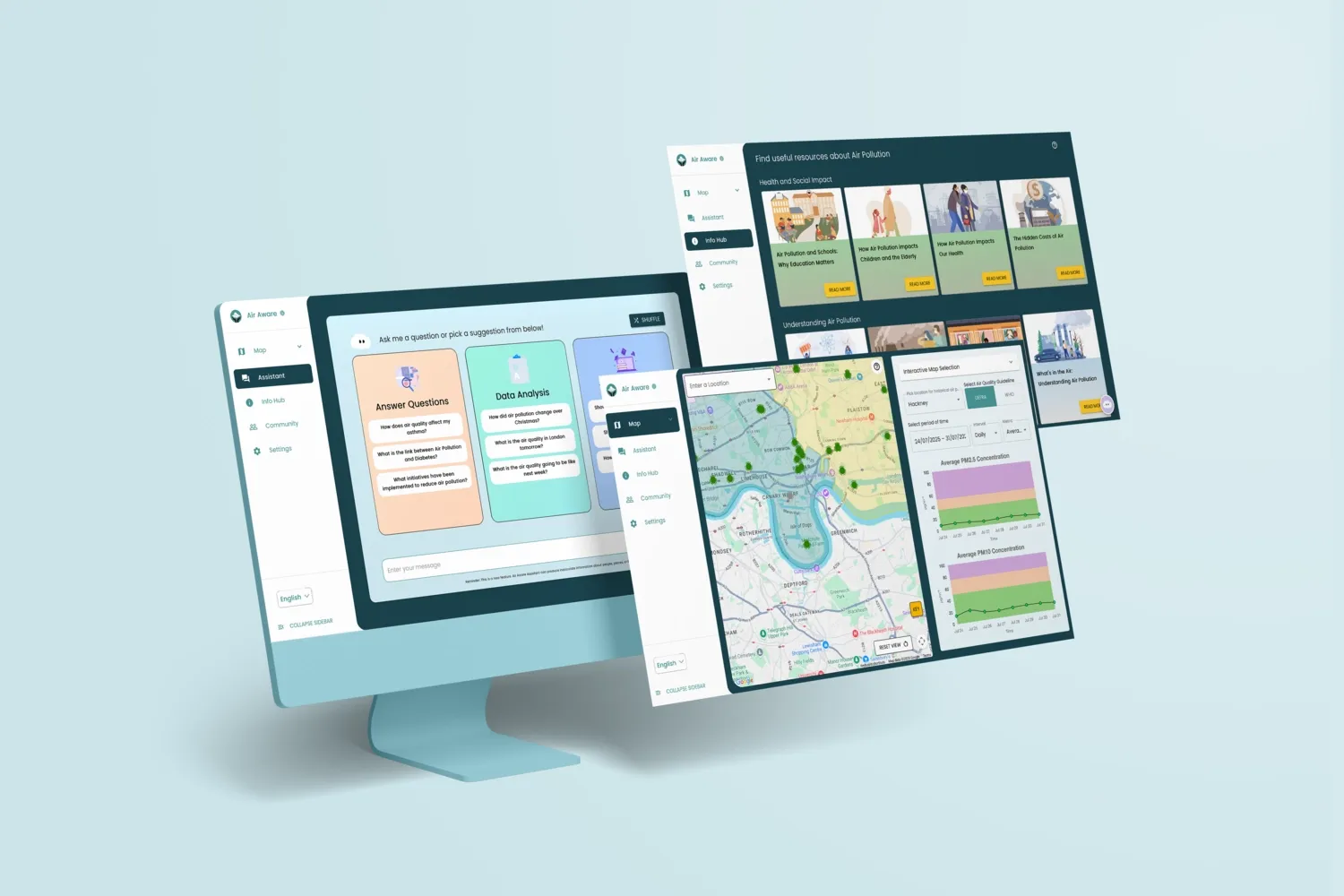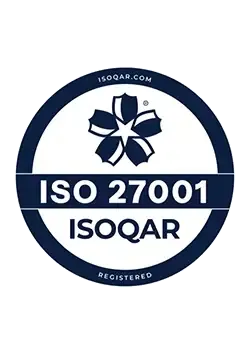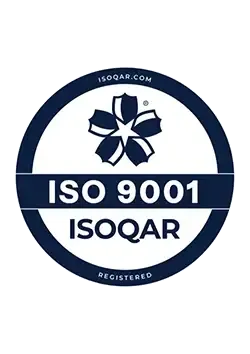The Bottom Line
London boroughs had a problem: residents weren't engaging with critical air quality information. Air Aware solved it with AI that transforms complex environmental data into conversations people actually want to have. The result? 93% better engagement than typical government websites.
Better Engagement
5-minute average vs 16 seconds
Active Users
In first year
Scroll Depth
Deep engagement vs 20-30%
Project Summary
Air Aware is an AI-powered web application that transforms how London residents engage with air quality data. Built for four London boroughs (Hackney, City of London, Tower Hamlets, and Newham), the platform combines advanced AI with intuitive design to make complex environmental data accessible and actionable for thousands of residents.
The Problem
Four London boroughs faced a critical challenge: residents weren't engaging with vital air quality information. These areas historically suffered from some of the worst air pollution in the country, with concentrations of PM2.5, PM10, and nitrogen dioxide exceeding Air Quality Objectives. Despite having extensive monitoring data, councils struggled to translate this information into formats that residents could understand and act upon.
The challenge was clear: create a platform that could make complex environmental data accessible to everyone, regardless of their technical background, while driving meaningful engagement and behaviour change around air quality.
The High-Stakes Challenge of Public Engagement
For London boroughs, getting residents to engage with air quality data represents a critical public health challenge. Traditional government websites see average visit times of just 16 seconds with scroll depths of 20-30%. This means vital health information about air pollution – which affects everything from asthma to heart disease – simply wasn't reaching the people who needed it most.
The Critical Issues
Previous attempts to improve public engagement with air quality data through traditional web design and static information had failed to achieve meaningful interaction. The solution needed to meet WCAG 2.1 AA accessibility standards while creating an engaging experience that would encourage residents to return and take action.
Our Solution: AI That Makes Data Human
We created a comprehensive AI-powered platform that transforms complex environmental data into conversational, actionable insights. Our approach focused on making air quality information as accessible as asking a question to a knowledgeable friend, while maintaining scientific accuracy and providing clear paths to action.
How We Solved It
AI Assistant for Plain English
An intelligent chatbot that translates complex air quality data into conversational explanations and personalised recommendations.
Interactive Data Visualisation
Real-time maps and charts that make pollution data immediately understandable and actionable for residents.
Community Engagement Platform
A hub connecting residents with local events, news, and actions they can take to improve air quality in their area.
Design Process
The user interface was designed with accessibility at its core, meeting WCAG 2.1 AA standards to ensure the platform works for users with varying needs. We developed the application through iterative prototyping, starting with static mockups and progressing to clickable prototypes that allowed real-time collaboration with local communities and borough partners.
Here are some early design iterations of the platform:
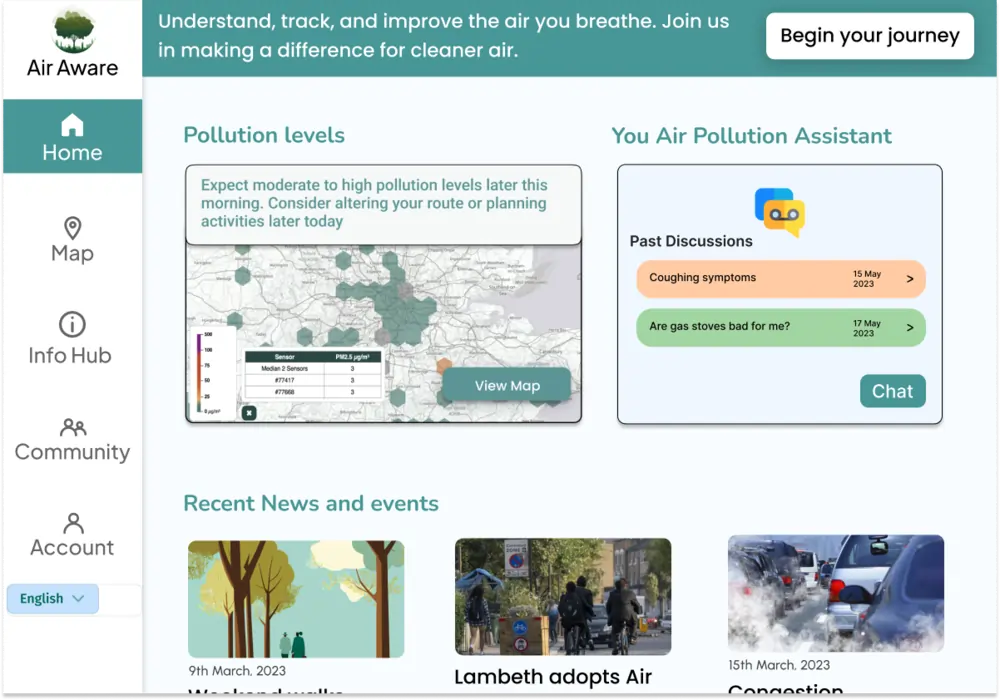
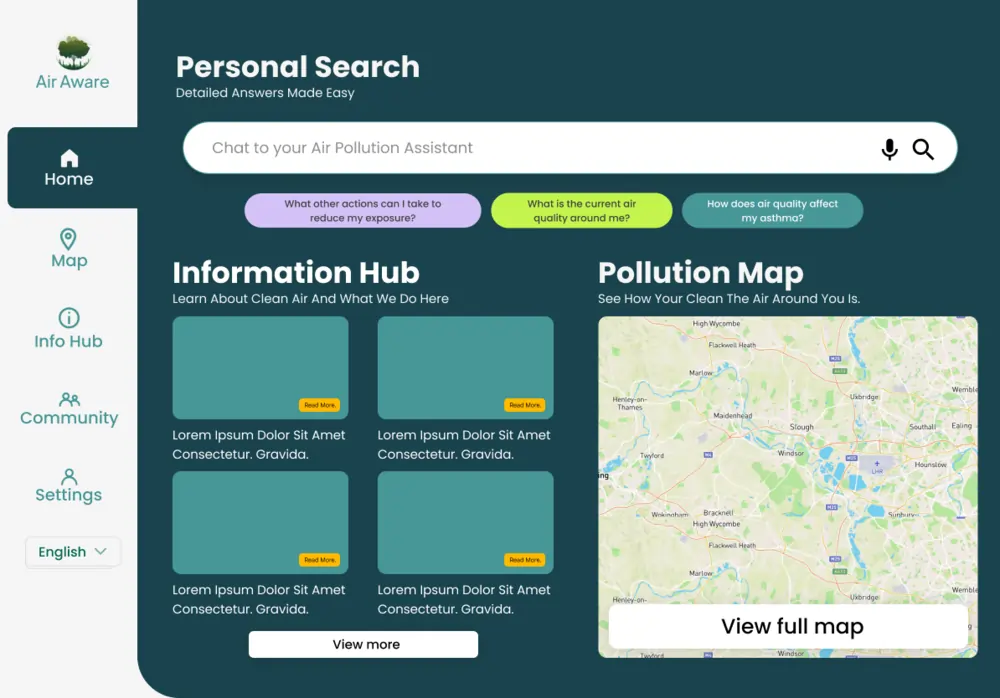
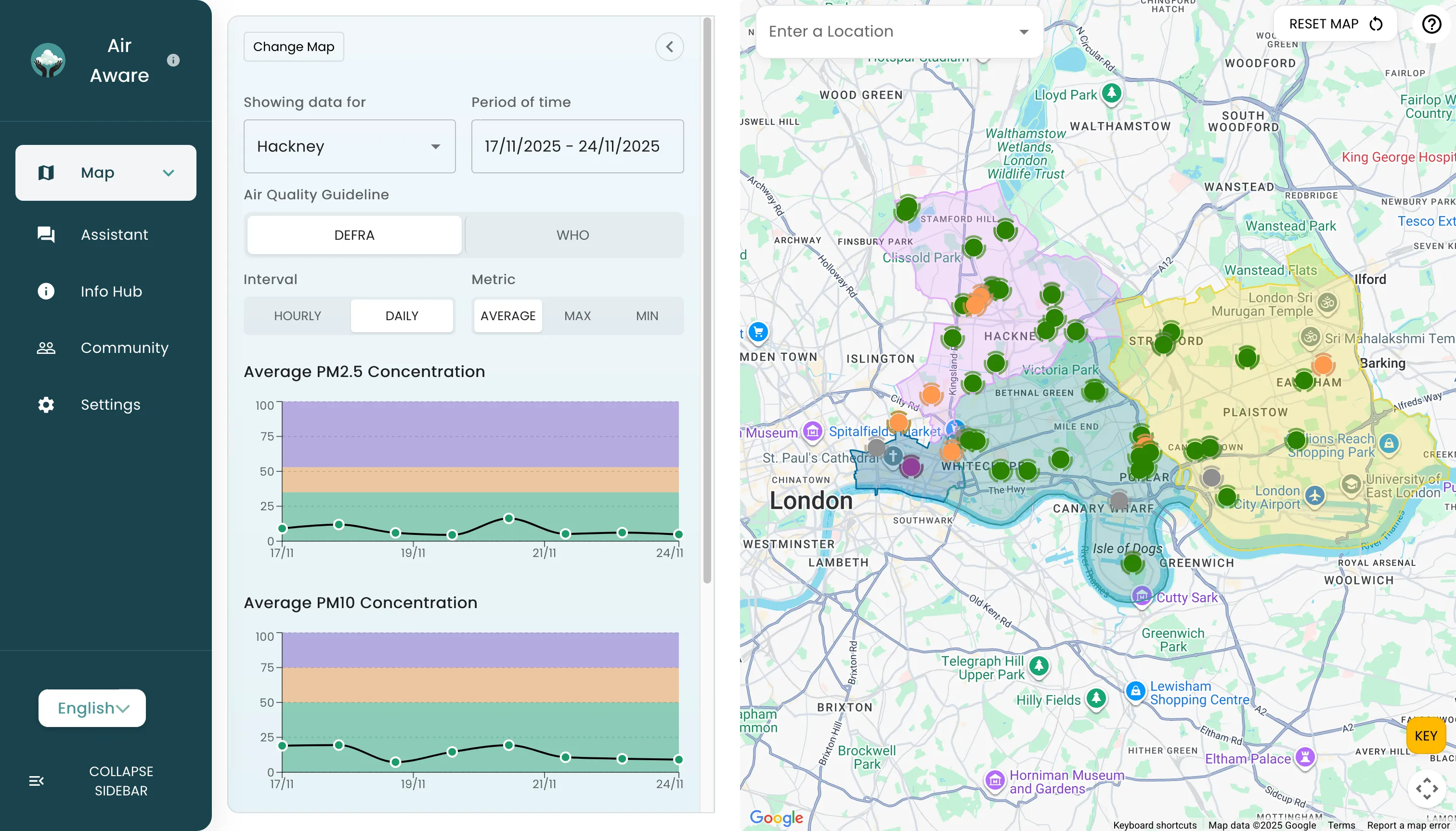
Key Platform Features

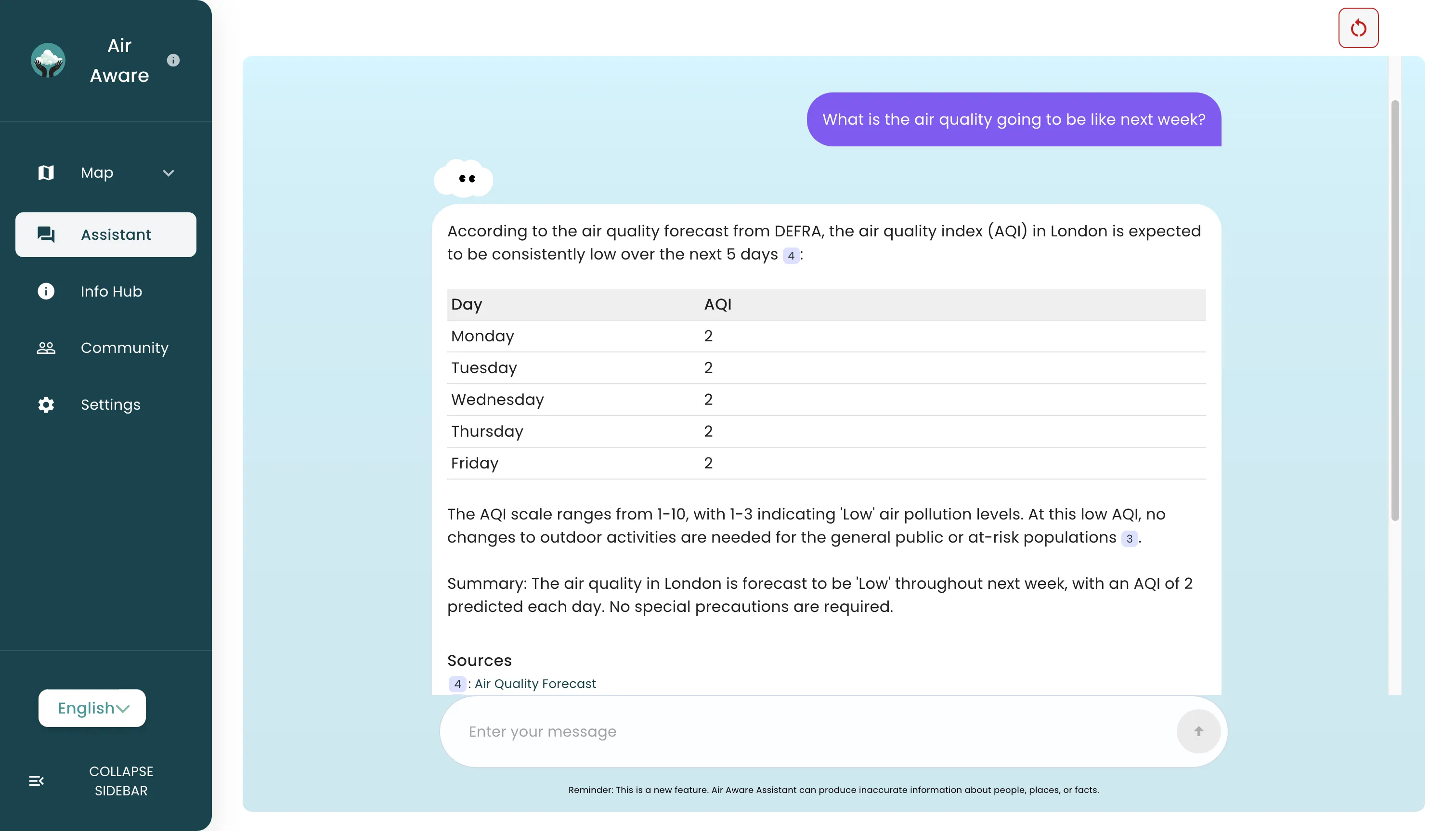
1. Air Quality Assistant
The assistant is a state-of-the-art AI chatbot powered by advanced language models, designed to provide Londoners with expert-level insights into air quality. This intelligent assistant delivers real-time, historical, and predictive air quality analytics in conversational language that anyone can understand.
Designed for a broad audience, it offers seamless integration of complex data analysis with user-friendly visual learning tools, including infographics, images, and videos. The assistant can process natural language requests such as 'When is air pollution lowest in Hackney?' or 'How did air pollution change in Newham over Christmas?' and provide accurate, calculated answers from multiple data sources.



2. Air Pollution Map
The interactive pollution map displays real-time and historical data from various sensors across London, presenting complex environmental data in an immediately understandable visual format. Users can explore pollution levels across different boroughs, compare historical trends, and understand how air quality varies by location and time.
The map integrates data from multiple sources including DEFRA monitoring stations and local sensors, providing comprehensive coverage of air quality across the participating boroughs. Interactive features allow users to drill down into specific areas, view pollution forecasts, and understand the impact of weather conditions on air quality.

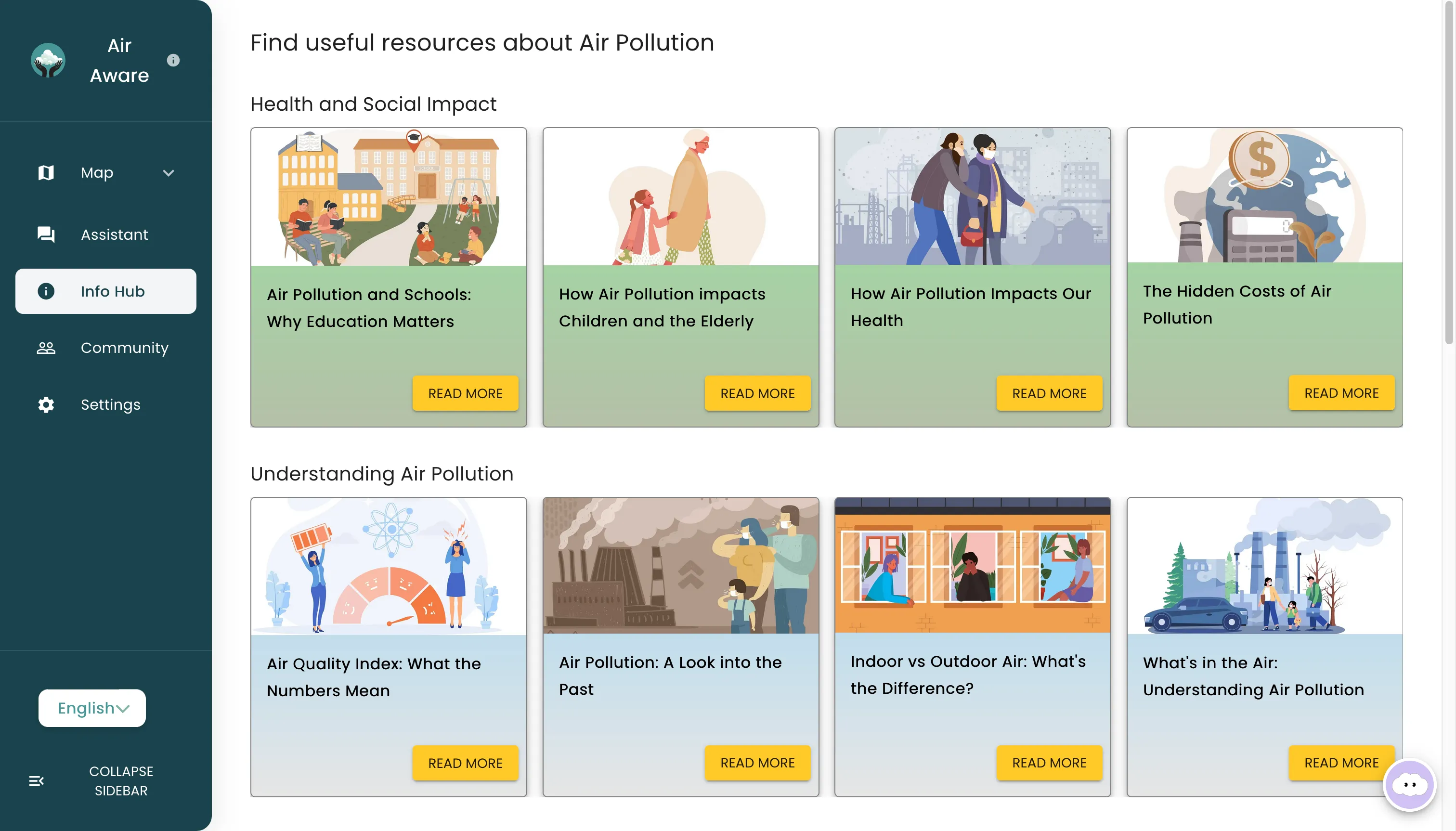
3. Information Hub
The Information Hub serves as a comprehensive resource centre offering articles, practical advice, and educational content about reducing exposure to air pollutants. All content is curated from trusted sources including DEFRA, NHS, British Heart Foundation, and peer-reviewed research.
The hub presents complex health and environmental information in accessible formats, with visual aids and clear explanations that help residents understand the connection between air quality and their health. Interactive guides provide step-by-step advice for protecting vulnerable family members and reducing personal exposure to pollution.

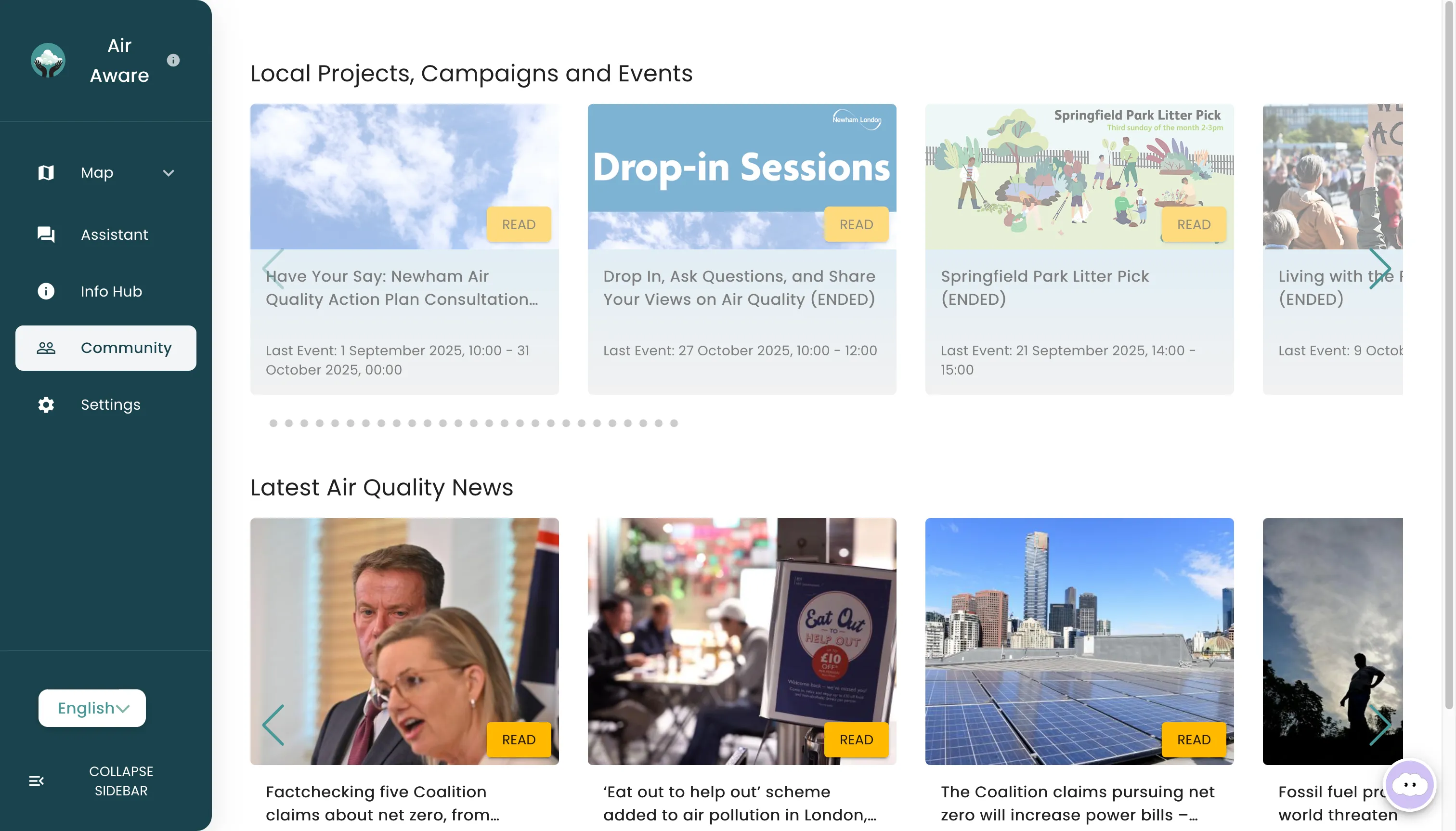
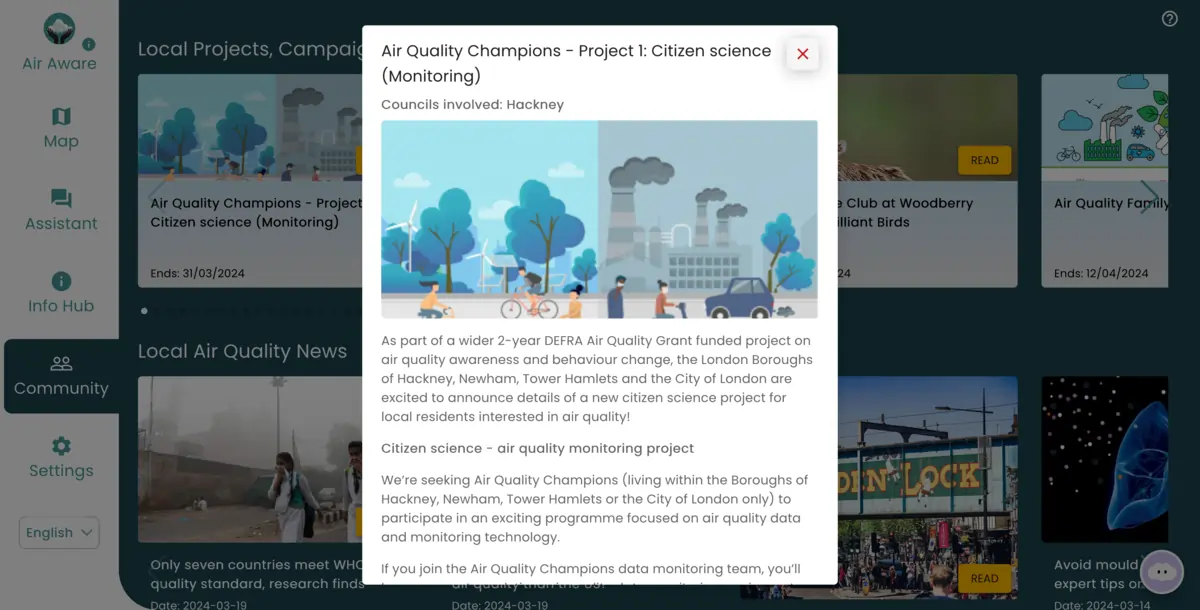
4. Community Hub
The Community Hub acts as a central space for residents to stay connected with the latest developments in London's fight against air pollution. It serves as a connection point for accessing up-to-date information on local events and news related to air quality.
The events section, curated and updated by council members from each borough, showcases upcoming activities and invites users to engage with their community. The news section aggregates recent updates from reputable sources such as the BBC, The Guardian, and Air Quality News, ensuring residents stay informed about the latest air quality trends and initiatives.


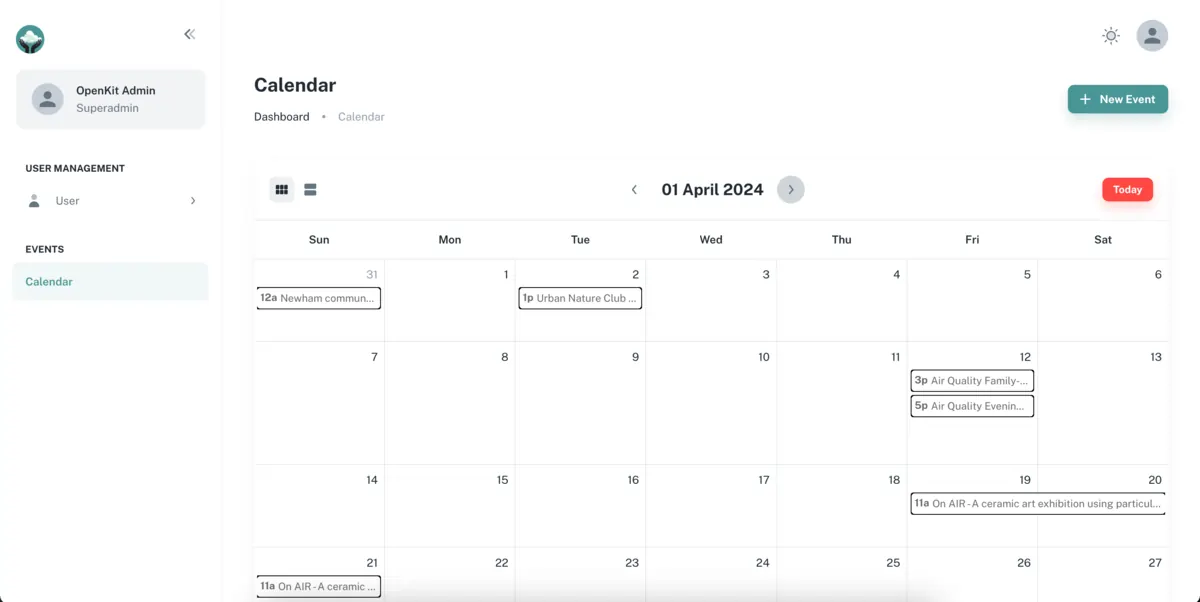
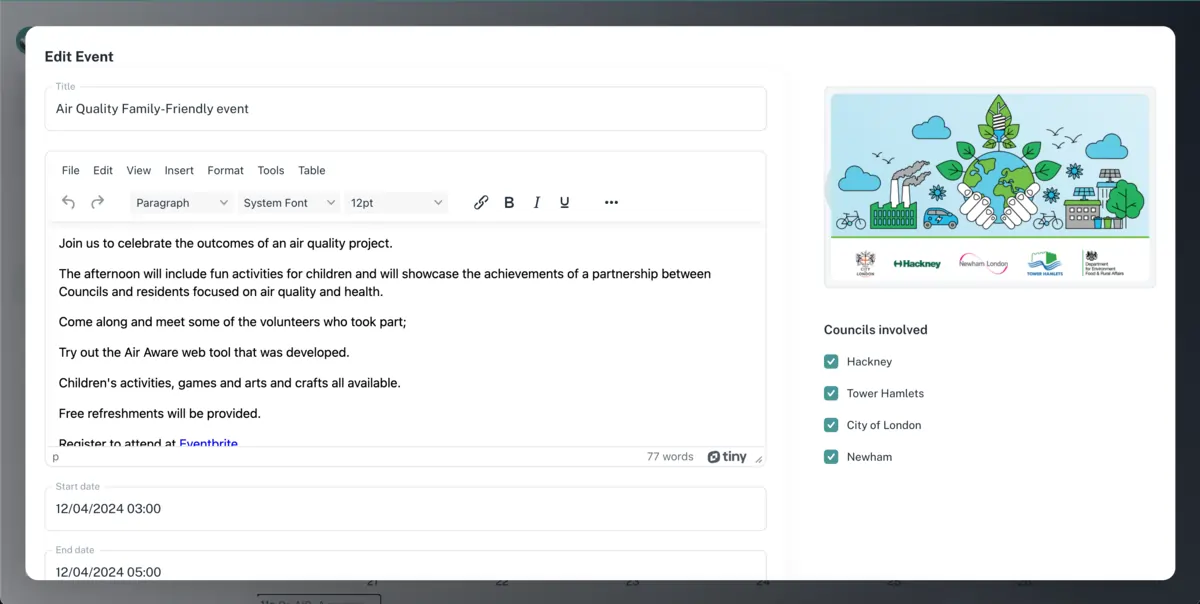
5. Content Management System
The content management system was created for internal use by council members across all participating boroughs. This separate platform allows registered members to create and manage events for their respective borough, which then appear chronologically on Air Aware within the community hub.
The system ensures that the community hub remains current with the latest local events and initiatives, providing a seamless connection between council activities and community engagement. The user-friendly interface allows for easy event creation and management, even for those without technical expertise.


Results and Impact
Within the first two months of launch, Air Aware achieved remarkable engagement levels that far exceeded expectations for government digital services:
User Engagement
Air Aware achieved 2,000+ user sessions in the first two months, with users spending an average of 5 minutes per session – a 93% improvement over typical government website engagement.
Deep Interaction
With 88% scroll depth, users are genuinely engaging with the content rather than bouncing immediately. This indicates high relevance and value of the information provided.
Accessibility Success
The platform meets WCAG 2.1 AA standards, with features like adjustable text sizes, high-contrast settings, and colour-blind friendly design making it accessible to all residents.
Community Impact
Deployed across four London boroughs with physical screens in public spaces and pharmacies, extending digital engagement into real-world community touchpoints.
The Return on Investment
Engagement Transformation
- 93% improvement in engagement compared to typical government websites
- 2,000+ active users in first 2 months of operation
- 5-minute average sessions vs 16-second industry average
- 88% scroll depth showing genuine content engagement
Public Health Impact
- Improved health awareness: Residents now understand air quality impacts on personal health
- Actionable insights: AI provides personalised recommendations for reducing exposure
- Community engagement: Residents actively participate in local air quality initiatives
- Data-driven decisions: Citizens make informed choices about daily activities
Client Testimonials
"From the outset, their team demonstrated a clear understanding of the brief which required a bespoke solution to be designed incorporating the different requests from a variety of stakeholders. Throughout the project, OpenKit's team remained focused on our objectives and was able to consistently prioritise the needs of our communities. Their thoughtful approach, combined with meticulous attention to detail, made working with them not only effective but also a genuine pleasure."
Dave Trew
Land, Water, Air Manager at Hackney Council
"OpenKit developed an impressive AI assistant, providing an engaging and informative way for our residents to understand air pollution. The tool's user-friendly interface and interactive features have made it easy for people to access the information they need. Despite the challenges faced during the project, OpenKit managed to deliver a product that exceeded our expectations."

Lily Mitrijevaite
Environmental Control Officer at Newham Council
Why This Matters for Your Organisation
Air Aware's transformation shows what's possible when moving beyond traditional government websites to AI-powered public engagement platforms. The boroughs didn't just improve their digital presence – they fundamentally changed how citizens interact with critical health information.
If your organisation struggles with public engagement, has complex data that needs to be accessible, or wants to create meaningful digital experiences that drive real-world behaviour change, this approach could transform your impact.
Ready to transform your public engagement?
We work with public sector organisations and businesses that need to make complex data accessible, engaging, and actionable. If you're struggling with low engagement rates or have important information that people need to understand, let's explore what's possible.
